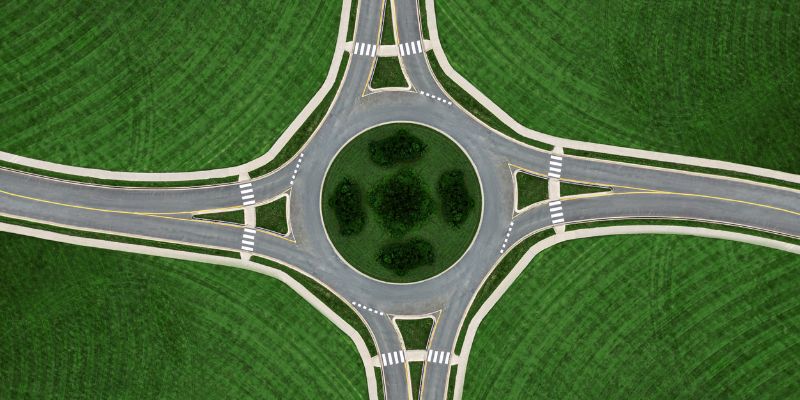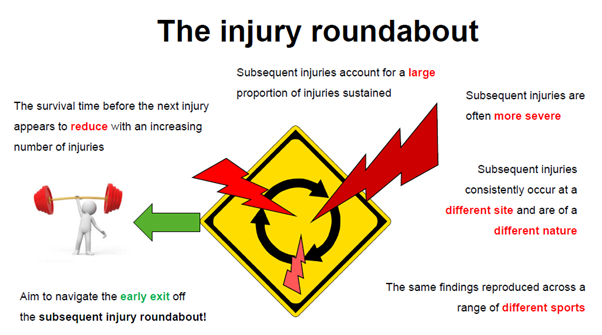Avoiding the injury roundabout

Are you currently injured or have you recently been injured? Do you get annoying niggles? Do you have a history of injuries?
If you answered yes to any of the questions above than you may be able to relate to the concept of the dreaded injury roundabout. Unfortunately for many people after they experience one injury, they go on to become injured again, and again and then again. While the second injury may be of the same type (e.g. a second ankle sprain following a previous ankle sprain), most people experience a different injury after they return back to their previous preinjury activity levels or sport. For example, people who have had a serious knee injury (such as an ACL injury) are more than two times more likely to injure their hamstring muscle compared to people who haven’t had a serious knee injury. When multiple injuries occur in a short period of time they also often become increasing more severe.

There are many reasons why there could be an increased risk of sustaining a subsequent injury when returning from an initial injury. For example, following an injury it is common for the injured region to become weaker and for the person to move with less control. It is also common after some injuries for our coordination and reaction time to become reduced. If these factors remain altered after returning from an initial injury, other regions of the body may start to work slightly differently or work harder to help compensate for the changes caused by the original injury. This could potentially increase the risk of injury at these other sites, as are they now exposed to new levels of force that they have not previously had to cope with.
While injured we often miss components of normal training sessions or activities, which temporarily reduces fitness levels and the body’s ability to safely cope with the demands of normal training and competition. During rehabilitation it is common for the injured body site to be strengthened and conditioned, but other body sites are often not trained as much as they were before the injury. So when an athlete is ready to return to full training and competition, the other areas of their body may not be as conditioned as they need to be to withstand the demands of the sport – which may then lead to an injury being sustained at a different site.
This is important to know. When we are injured some people often only focus on the body part that is being rehabilitated, yet it is just as important to keep the non-injured parts of your body healthy and injury free. For an athlete, sustaining multiple injuries of any type can affect their ability to perform. The take home message for anyone, from high performance athletes to weekend warriors, is that while you are injured it is important to complete a thorough rehabilitation program that includes whole body fitness and conditioning work while recovering from an injury. Furthermore, once you return to your preinjury activities, it is important to listen to your body for niggles which may be the early signs of a new injury commencing which could be the start of the dreaded injury roundabout. A physiotherapist can assist in this process by providing an individualised program to help prevent other types of subsequent injuries when you are either recovering from an initial injury or trying to prevent future sports injuries.
Liam Toohey
Senior Physiotherapist
Lake Health Group
